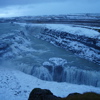Let me state here that I am not approaching this work as an analyst. I'm a writer of pop-culture artifacts -- namely, roleplaying games. I am interested in how pop-culture "trash" -- the discarded, the dismissed -- reveals truths moving in the collective unconscious that are often more telling, vital and alive than those expressed in more consciously considered and (over?)wrought works of art. I am interested in how these undercurrents symbolically and synchronistically interrelate to other things going on in culture. More often than not, these connections seem absurd. Jeff Wells, at Rigorous Intuition, has pointed out that the universe is sometimes a lot like a Google search -- it's an associative database. Do a search on Google and you'll often get odd juxtapositions of things that don't seem to belong together, but are connected by the word or phrase you've typed in. That describes synchronicity rather well. Unrelated things pop up in our lives significantly, based around a theme, image, word or number.
It's these sort of odd juxtapositions and mash ups in pop culture that are often overlooked because they don't fit our definitions of causality or belonging. Because the writer, artist, designer, etc., did not consciously put them there, we tend to afford them no significance, or consider it an "accident". The unconscious, however, works with intention, balancing our limited ego perspective by expressing what the ego refuses or has denied. Pop culture is a good place to go looking for traces of the cultural shadow, as well as other archetypes. The movements of these behemoths of the collective unconscious are invisible to consciousness, but they often leave traces or premonitions of their coming in art. I think the popular arts provide a more immediate view, if we can look past the smudges in the window. Let's face it: most pop culture is crap. Looking it at archetypally doesn't mean we have to excuse poor artistry and workmanship. The issues I'm concerned with here aren't "is it good or bad?" Rather, "what does it say?"
So, this brings me to The Red Book. One section of Shamdasani's introduction struck me as having interesting significance: Jung's discovery of the Self in his Liverpool dream.
Several young Swiss and I are down by the docks in Liverpool. It is a dark rainy night, with smoke and clouds. We walk up to the upper part of town, which lies on a plateau. We come to a small circular lake in a centrally located garden. In the middle of this there is an island. The men speak of a Swiss who lives here in such a sooty, dark dirty city. But I see that on the island stands a magnolia tree covered with red flowers illuminated by an eternal sun, and think, "Now I know, why this Swiss fellow lives here. He apparently also knows why."
Jung paints a mandala based on the city map he has seen.
The dream represented my situation at the time. I can still see the grayish-yellow raincoats, glistening with the wetness of the rain. Everything was extremely unpleasant, black and opaque, just as I felt then. But I had a vision of unearthly beauty, and that was why I was able to live at all … I saw that here the goal had been reached. One could not go beyond the center. The center is the goal, and everything is directed toward that center. Through this dream I understood that the self is the principle and archetype of orientation and meaning.
We all know Liverpool is famous for something other than Jung's dream: The Beatles, of course. That the dream took place there is just a coincidence, right? Hmm. The Red Book was born from Jung's prophetic vision of what he later realized was World War I. Why should we assume that Jung's prophetic sense ended there? He could have had no way of knowing that the eternal sun he encountered on that dream island in the center of Liverpool would herald the Fab Four, who would later sing about that sun and tell us "it's all right."
Has there ever been before or since a phenomenon like The Beatles? I don't mean the boys themselves, but the world's reaction to them. How could such a cataclysmic cultural event not reverberate back in time and have been foreseen by a few lonely prophets, who had no idea what they had witnessed or what would come of it?
The classic four-man rock band is a mandala of sorts, representing the four elements of Earth (drums), Air (vocals), Fire (guitar) and Water (bass). Led Zeppelin later made this more explicit in actually adopting elemental symbols for the band members.
The tree Jung saw was a magnolia. Perhaps a sugar magnolia, as sung about by The Grateful Dead?
I don't know what all these means. Maybe it's just bullshit pattern-seeking behavior triggered by anxiety in my amygdala. To paraphrase Robert Anton Wilson: "All things are true in one sense, false in one sense, meaningless in one sense, true and false in one sense, true and meaningless in one sense, true and false and meaningless in one sense, etc."









